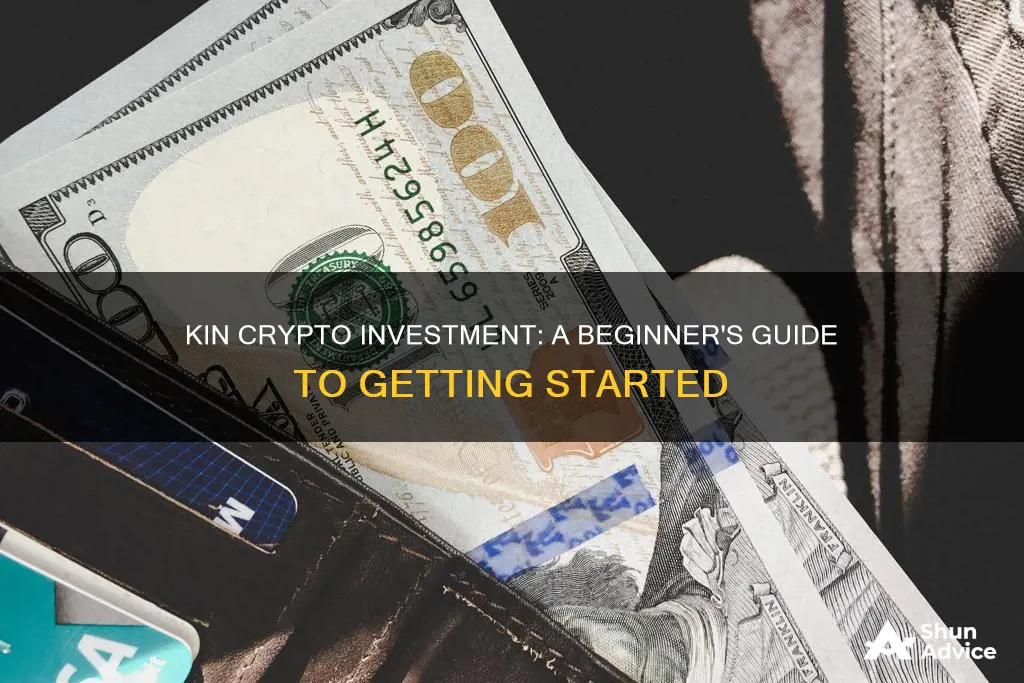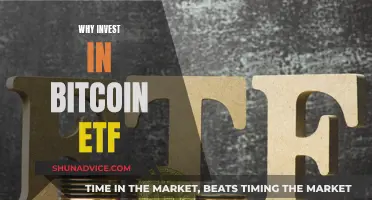
Kin (KIN) is a decentralised cryptocurrency that enables global, intermediary-free transactions. It was created in 2017 by Ted Livingston's Kik Inc. and initially launched on the Ethereum blockchain. In 2020, Kin migrated to the Solana blockchain, leveraging its high scalability and low transaction costs. This move has positioned Kin as a viable medium for micropayments across various platforms, supporting an expanding economy of apps, games, and online services.
Kin offers a unique value proposition by incentivising both developers and users. Developers can monetise their web or mobile games and apps without relying on advertisements or selling user data. The Kin Rewards Engine provides developers with weekly rewards based on user engagement within the Kin economy, creating a win-win scenario. Users, on the other hand, earn Kin through their engagement with the app, such as logging in daily or interacting with branded content.
Kin has a growing community and is integrated into numerous web, mobile, and gaming apps. It is the most-held SPL token on the Solana Blockchain, with over 8 million unique holders.
If you're considering investing in Kin, it's important to remember that, like all digital assets, it is subject to volatility and significant price fluctuations.
What You'll Learn

Where to buy KIN
Kin (KIN) is a type of cryptocurrency that was initially launched on the Ethereum blockchain in 2017. In 2020, it became the first cryptocurrency to migrate to the Solana blockchain.
If you are interested in buying KIN, there are several crypto exchanges where you can do so. Here is a list of some of the top exchanges for trading KIN, according to CoinMarketCap:
- Bitrue
- Gate.io
- MEXC
- CoinEx
- Kraken
It is important to note that not all exchanges are available in all jurisdictions. For example, while Gate.io accepts most international jurisdictions, it does not accept users from the USA or Canada. On the other hand, Kraken is available in over 190 countries, including Australia, Canada, Europe, and the USA (excluding New York and Washington state).
Before investing in any cryptocurrency, it is important to do your own research and understand the risks involved.
The Future of Digital Coins: Best Investment Options
You may want to see also

KIN's value and price predictions
KIN is a decentralised cryptocurrency designed to facilitate global transactions without intermediaries. It was launched in 2017 by Kik Interactive and was originally hosted on the Ethereum blockchain. In 2020, KIN migrated to the Solana blockchain to leverage its high scalability and low transaction costs. This migration has positioned KIN as a viable medium for micropayments across various platforms, supporting a burgeoning economy of apps, games, and online services.
KIN is currently ranked #624 in the entire crypto ecosystem, with a market cap of $42,725,895. The price of KIN is predicted to reach a maximum value of $0.000019 by the end of 2024, with an average trading price of $0.000018. In 2025, it is expected to range between $0.000027 and $0.000031, with an average price of $0.000028.
Analysts forecast that KIN's price could reach a maximum of $0.000218 by 2030. However, it is important to note that KIN is highly dependent on the overall performance of the crypto industry, and its trajectory is unpredictable. As of September 2024, KIN is trading at around $0.000015.
While KIN has the potential for future growth, it faces fierce competition from other similar crypto projects and does not stand out in terms of technology and innovation. Additionally, it lacks a genuine community beyond speculators and the hype-chasing crowd, and the team behind the project is unproven. These factors may hinder its long-term success and price increase.
KIN's parent company, Kik, has a significant advantage with its large active user group, which is a huge plus for the coin's usage. KIN's integration within the Kik ecosystem of apps provides a solid user base, and its focus on compensating users for their time and engagement is a key strength. However, KIN's regulatory status and legal battles with the SEC have created uncertainty about its future.
In summary, while KIN has some positive attributes and use cases, its success and price appreciation are not guaranteed. It faces challenges and competition in the crypto space, and its value may remain volatile.
Avoid Crypto: Risky, Volatile, and Unstable Investments
You may want to see also

KIN's regulatory status
Initially, Kin faced regulatory challenges in the form of charges from the Securities and Exchange Commission (SEC) against its parent company, Kik Interactive, for an unregistered securities offering. This legal battle led to a drain in resources and eventually, Kik Interactive accepted an offer from MediaLab in 2019, allowing the messaging service to continue operating.
However, in 2020, Kik Inc. reached a mutual settlement with the SEC, wherein Kin was not required to be registered as a security. This settlement provided regulatory clarity for Kin, confirming its status as a non-security and setting it apart from many other cryptocurrencies in terms of regulatory certainty.
As of 2024, Kin is fully decentralized, with no centralized entity or foundation managing its development or acting on its behalf. Instead, it is supported by an autonomous, independent global community of stakeholders who are economically aligned and incentivized to expand Kin's utility. This decentralization further reinforces the unique regulatory position of Kin within the cryptocurrency space.
Bitcoin or Ripple: Which Crypto is the Better Investment?
You may want to see also

KIN's advantages over other cryptocurrencies
KIN is a cryptocurrency with several advantages over other digital currencies. Firstly, it was built inside the social media network, Kik, providing a digital currency for the Kik community. This gave KIN a ready-made user base of millions of active users, which most companies that launch new cryptocurrencies do not have. This existing user base helped drive consumer adoption of the cryptocurrency.
Secondly, KIN is designed to incentivise developers to build products and services on the Kik network. Developers who make apps, games, and stickers on Kik are rewarded in KIN directly by their users, rather than relying on ad revenue. This incentivisation model, known as the Kin Rewards Engine (KRE), pays developers a weekly reward based on the level of user engagement they bring to the KIN economy. This creates a win-win situation for both developers and users, as developers are incentivised to create fun and engaging user experiences, and users are rewarded for their contributions.
Thirdly, KIN is easy to integrate into existing apps. In the past, blockchain professionals were required to create cryptocurrency apps. However, KIN provides a suite of helpful SDKs that make it simple to integrate KIN into any app. For example, the KIN Developer community has made SDKs for Android, iOS, Unity, and even a No-Code SDK for people without programming knowledge. This low barrier to entry makes it easier for more people to create crypto apps and contribute to the growth of the KIN ecosystem.
Finally, KIN has a strong focus on monetisation for developers. The entire KIN ecosystem is designed to help developers monetise their apps, which continues to attract new talent and drive innovation and functionality. As a result, bigger and more interesting apps are joining the KIN ecosystem, further enhancing its potential for widespread adoption.
Shiba Inu Coin: Worthy Investment or Risky Gamble?
You may want to see also

KIN's history and future
KIN was created in 2017 by Kik Interactive as an incentive for using its social media app, Kik, and its services. Kik was a messaging service with millions of active users, which gave it a key advantage over other cryptocurrencies in terms of having a ready-made user base. KIN was launched via an initial coin offering (ICO), which raised roughly $100 million in investor funds.
KIN had special uses within the Kik messenger platform. Users could earn KIN for making contributions to the broader Kik community and then spend it on various goods and services within the Kik platform. Kik described the KIN token as "different from other digital currencies because it [was] a cryptocurrency," with similarities to Bitcoin in terms of using a public blockchain and having monetary value.
In 2019, Kik Interactive faced charges from the Securities and Exchange Commission for an unregistered security offering, which led to the company being acquired by MediaLab. Despite this setback, Kik Interactive continued its efforts to save its cryptocurrency. In the same year, Kik announced it would shut down its messaging service to focus on KIN.
KIN was fully decentralized and handed off to the users in July 2023. The Kin Foundation shut its doors in 2023 as well, to further decentralize the cryptocurrency and blockchain. As of January 2024, KIN had a market cap of $40.28 million.
Looking ahead, analysts have made KIN price predictions for the coming years. For instance, Cryptopolitan forecasts KIN to reach a maximum price of $0.0000172 by the end of 2024 and an average price of $0.0000278 in 2025. In 2025, KIN is expected to range between $0.000027 and $0.000031, with an average price of $0.000028. By 2030, KIN is predicted to reach a minimum price of $0.000182 and an average price of $0.000187.
KIN's transition to the Solana blockchain enhances transaction efficiency and scalability, positioning it well for broader adoption in the digital economy. The settlement with the SEC over the 2017 ICO, which confirmed KIN's status as a non-security, also provides regulatory clarity and potentially reduces investment risk. Additionally, KIN's growing use in various applications and services underscores its practical utility and potential demand. These factors suggest that KIN could be a viable option for investors looking to enter the crypto market. However, like all digital assets, KIN is subject to significant price fluctuations and volatility, so investors should carefully consider these risks.
Crypto: Invest or Trade? Understanding the Difference
You may want to see also
Frequently asked questions
KIN is a decentralised cryptocurrency that enables global, permissionless transactions without the need for intermediaries. It was created in 2017 by Ted Livingston's Kik Inc. and initially launched on the Ethereum blockchain.
There are several ways to get KIN tokens, but the most popular way is through purchasing them from crypto exchanges like Kraken, Gate.io, Bitrue, MEXC, and CoinEx.
KIN's transition to the Solana blockchain enhances transaction efficiency and scalability, positioning it well for broader adoption in the digital economy. The settlement with the SEC over a 2017 ICO, which confirmed Kin’s status as a non-security, also provides regulatory clarity, potentially reducing investment risk. Additionally, Kin’s growing use in various applications and services underscores its practical utility and potential demand. These factors suggest that Kin could be a viable option for investors looking to put some money in crypto. However, like all digital assets, KIN is volatile and subject to significant price fluctuations, so investors should consider these risks.
As of September 2024, the live price of KIN is $0.000016 USD, with a 24-hour trading volume of $178,117 USD.







